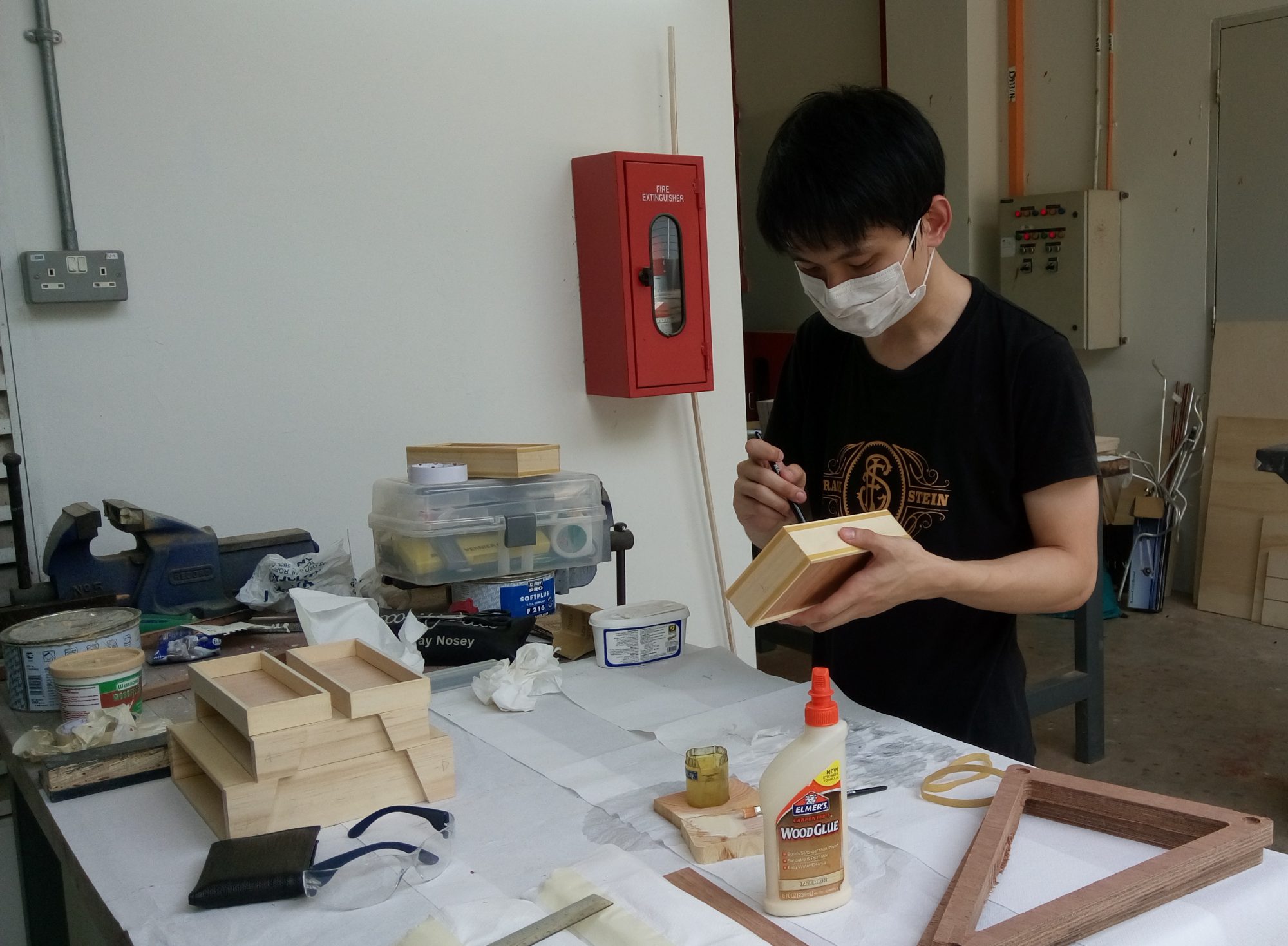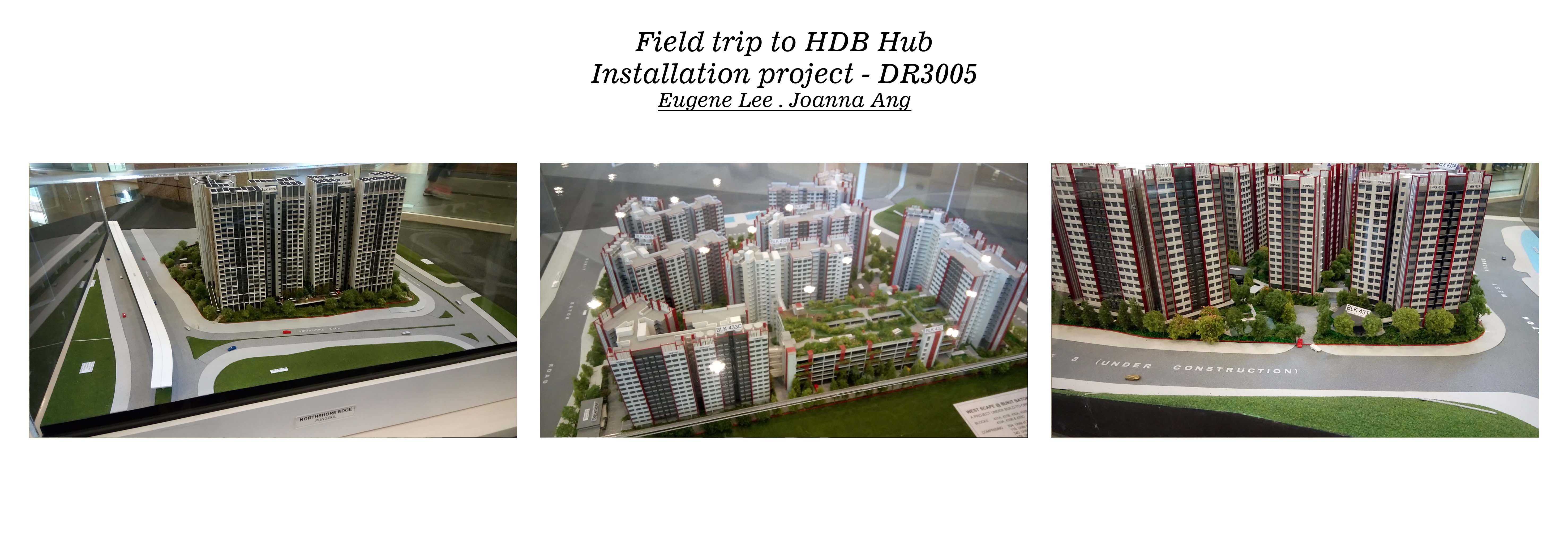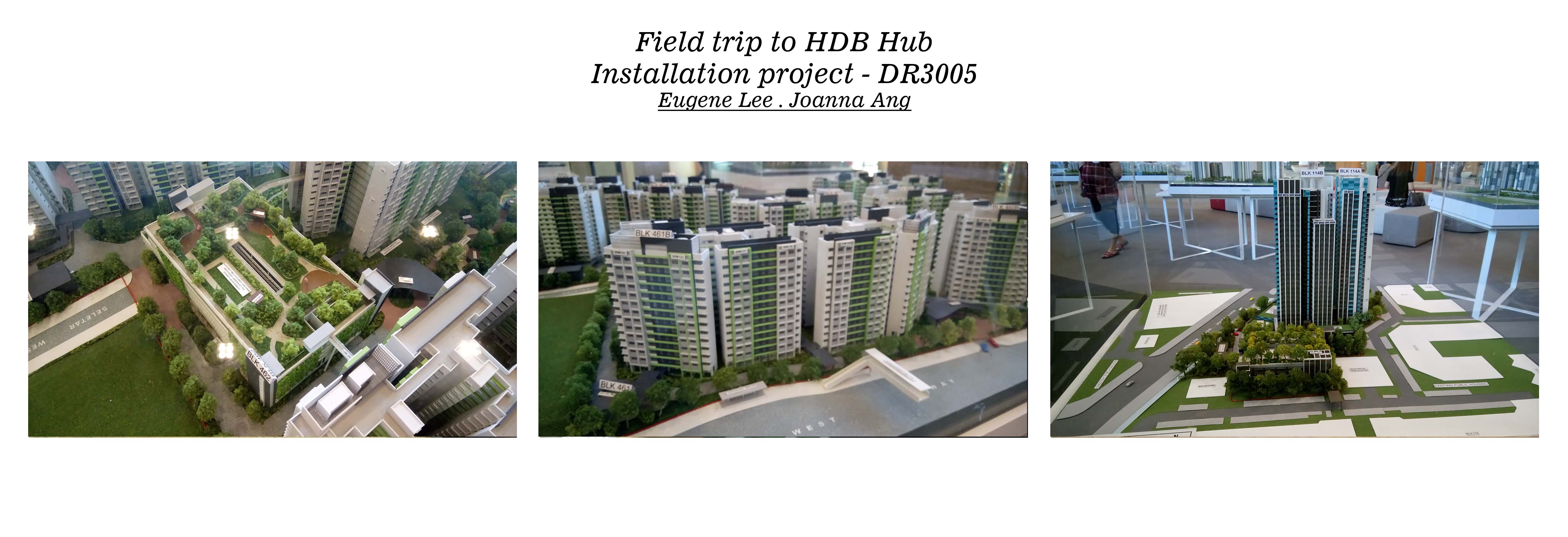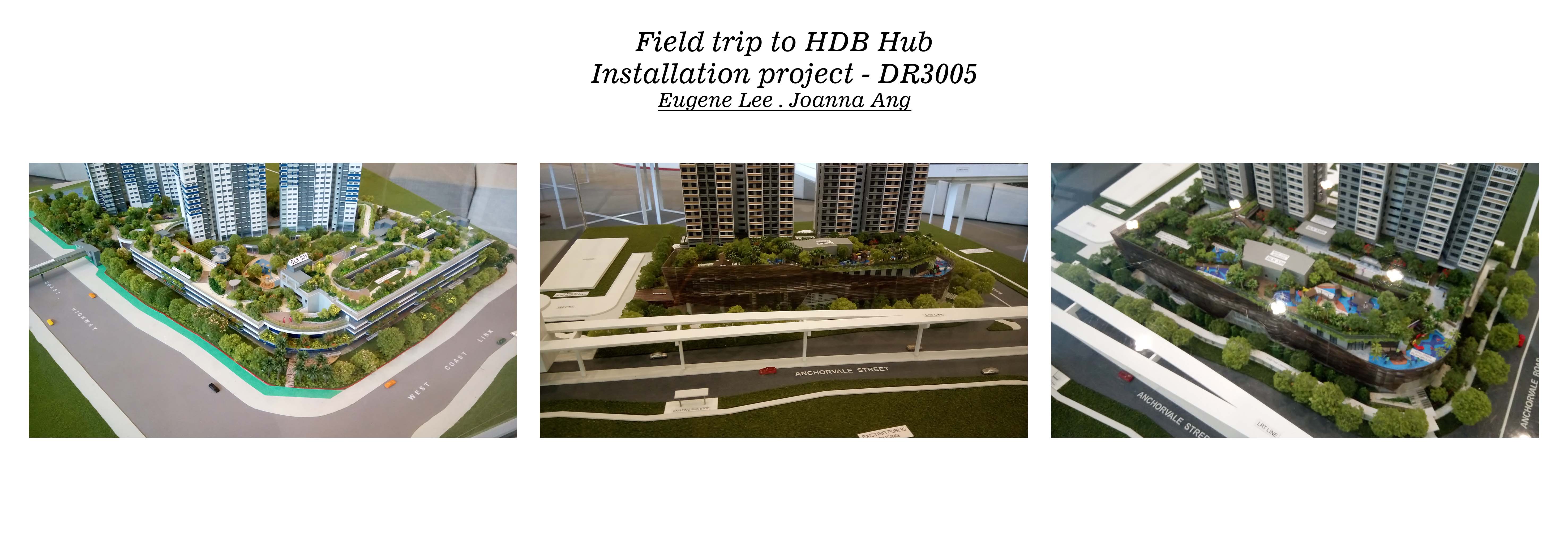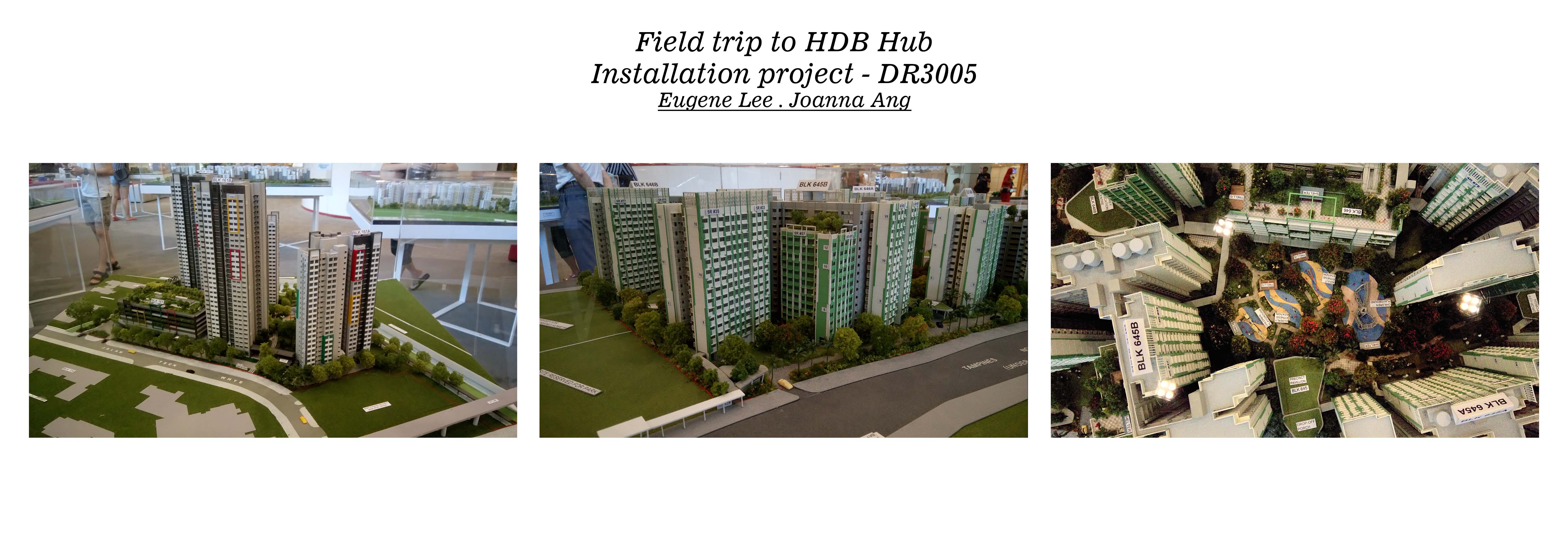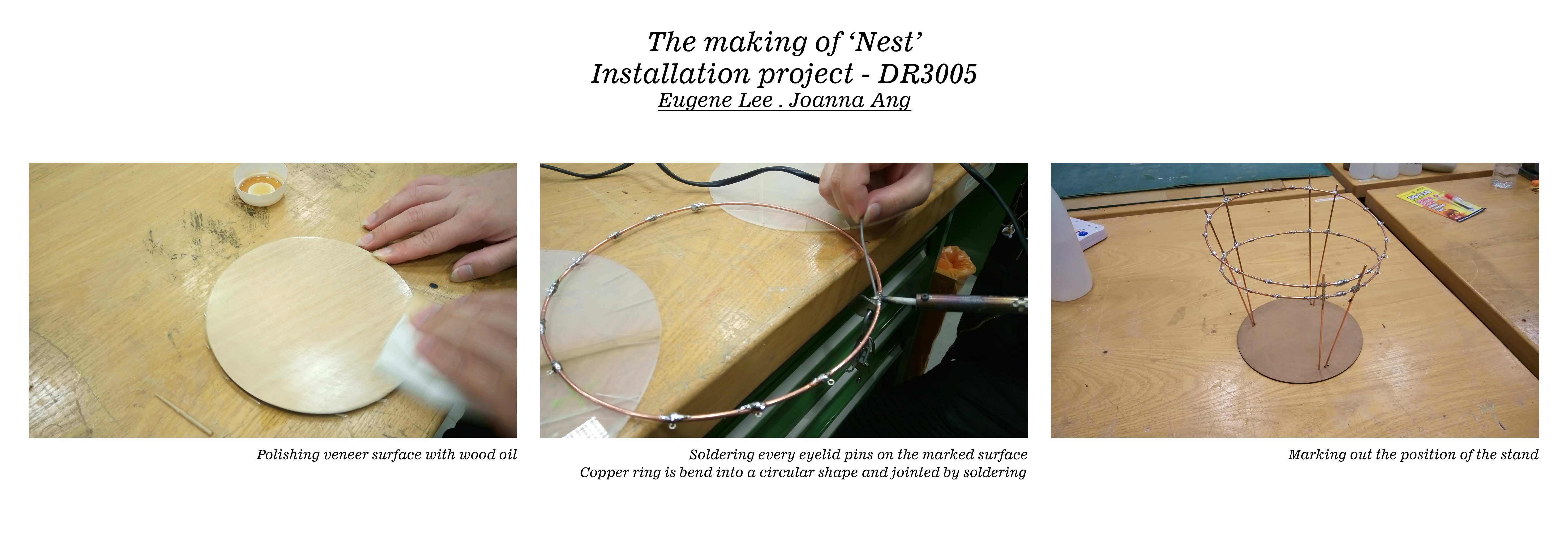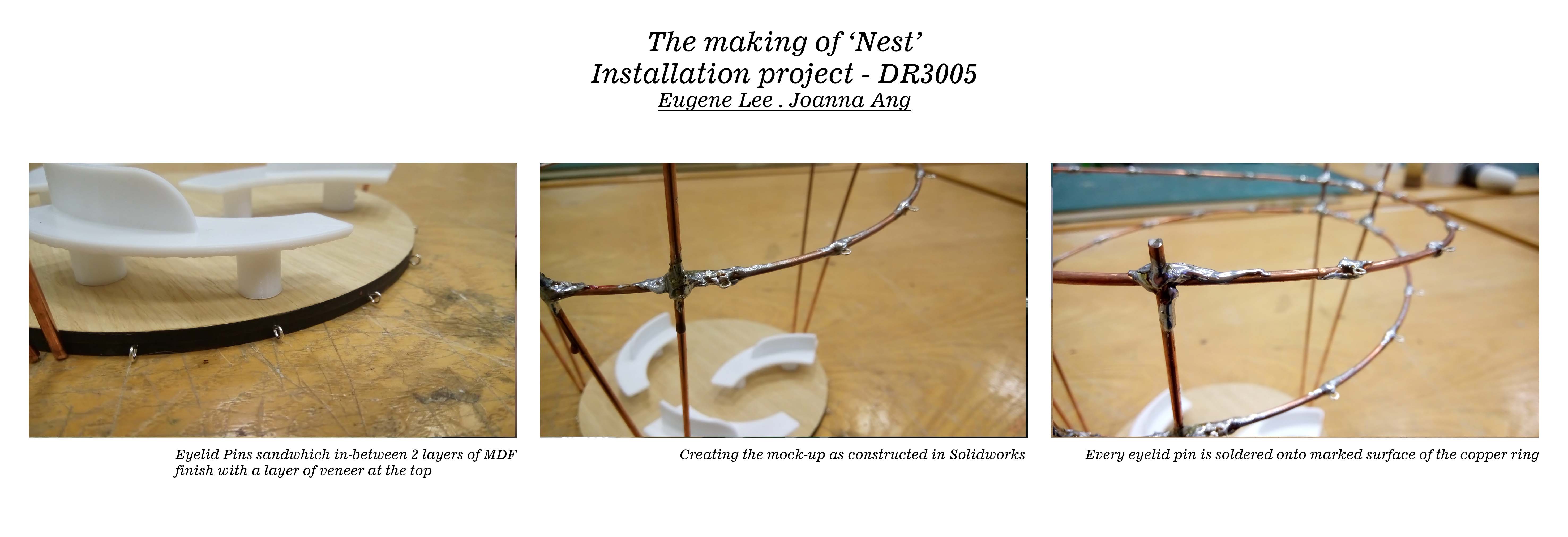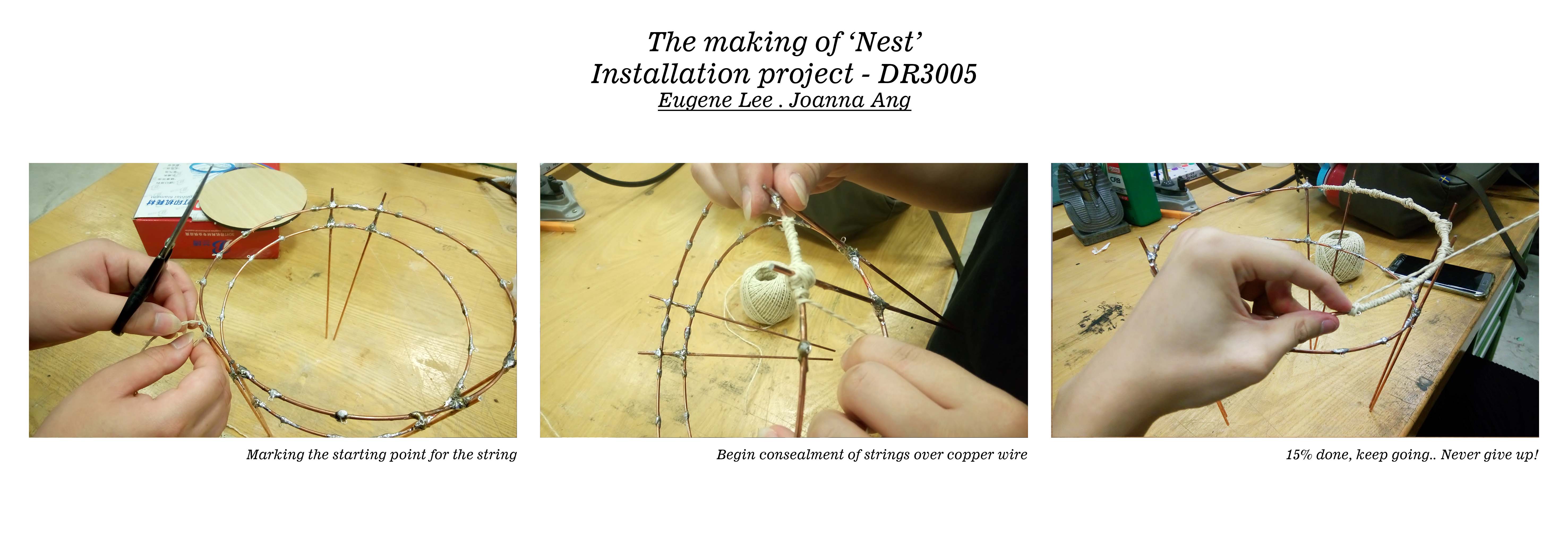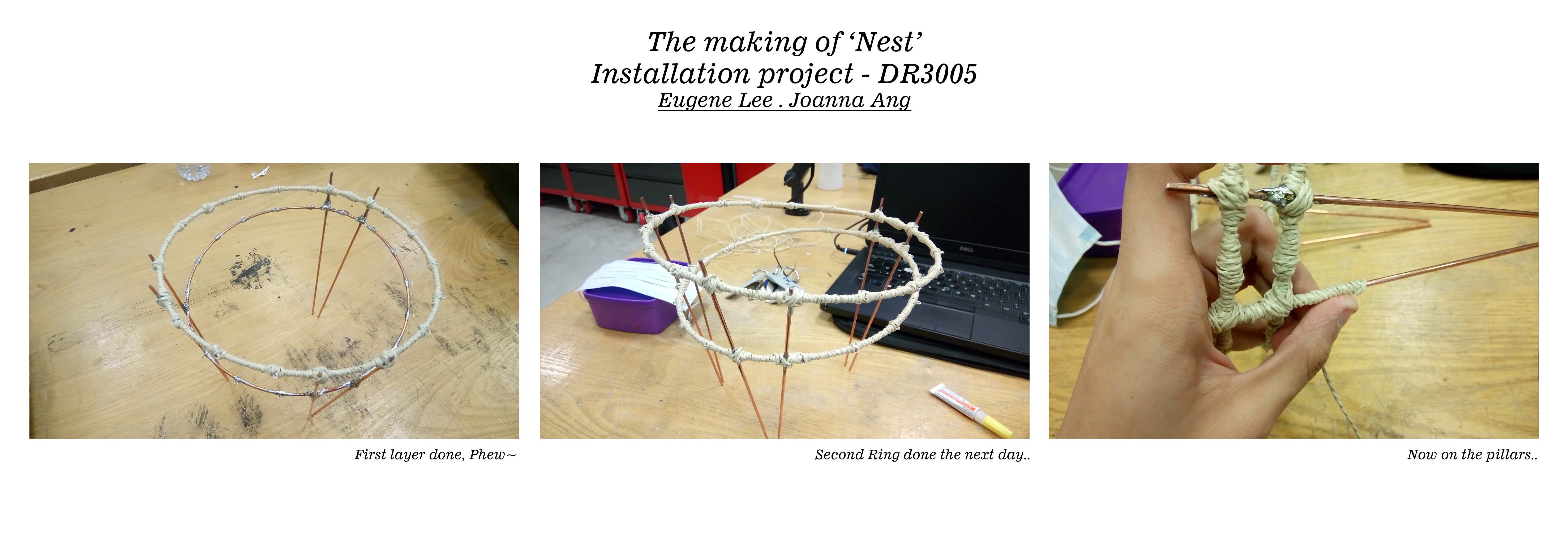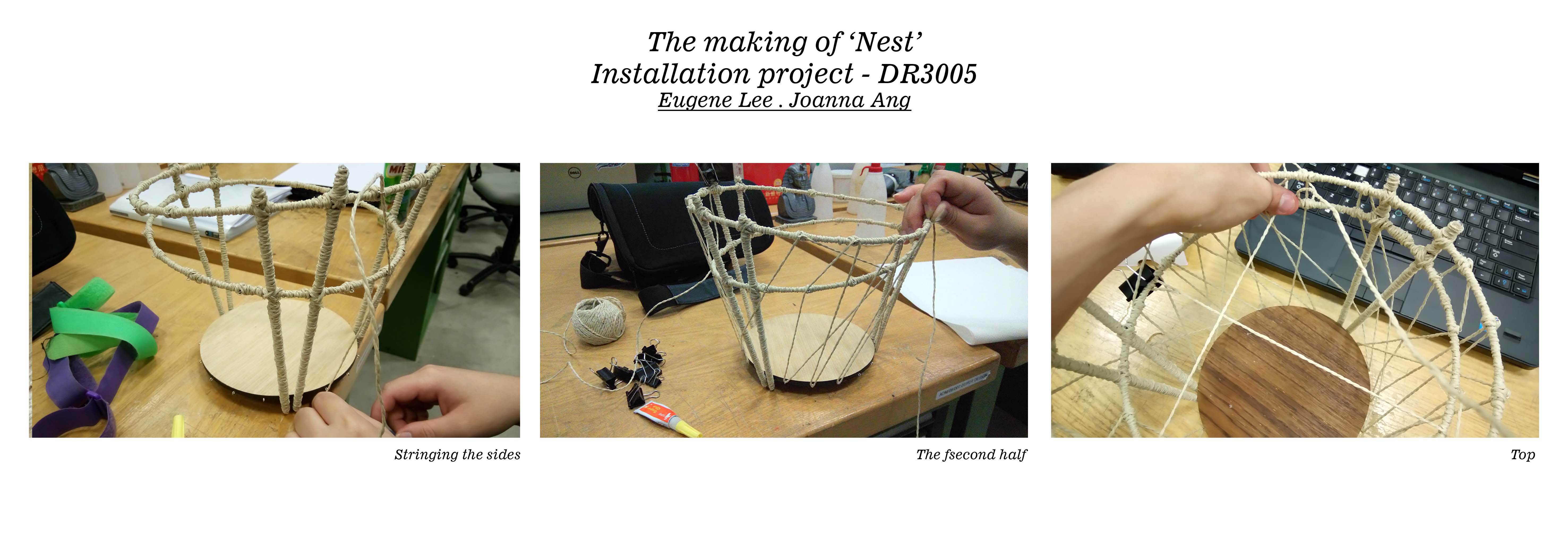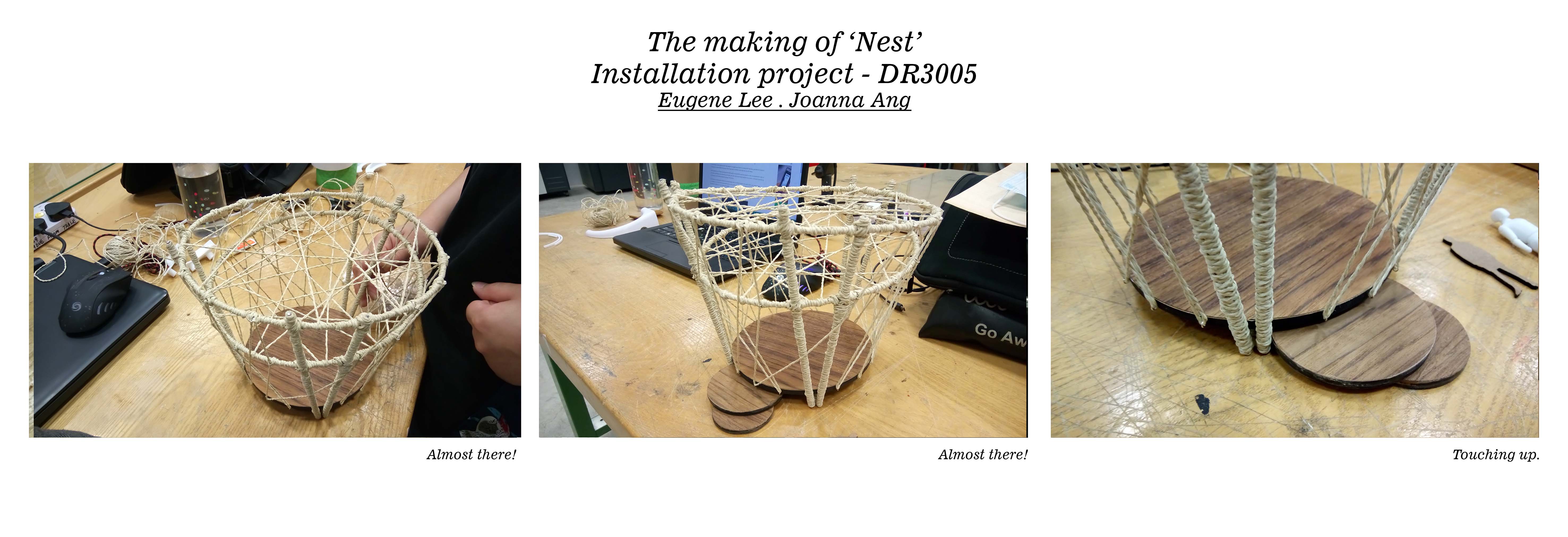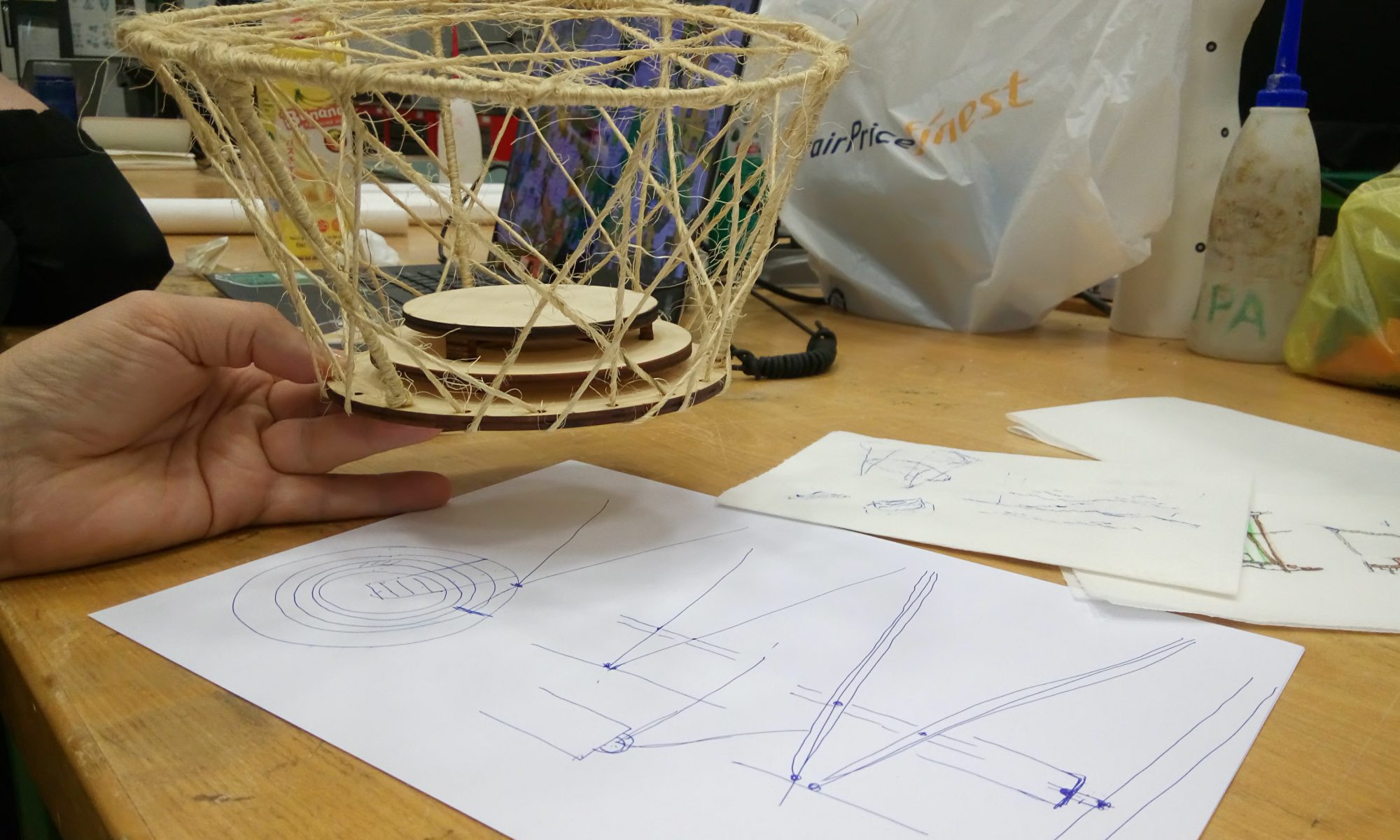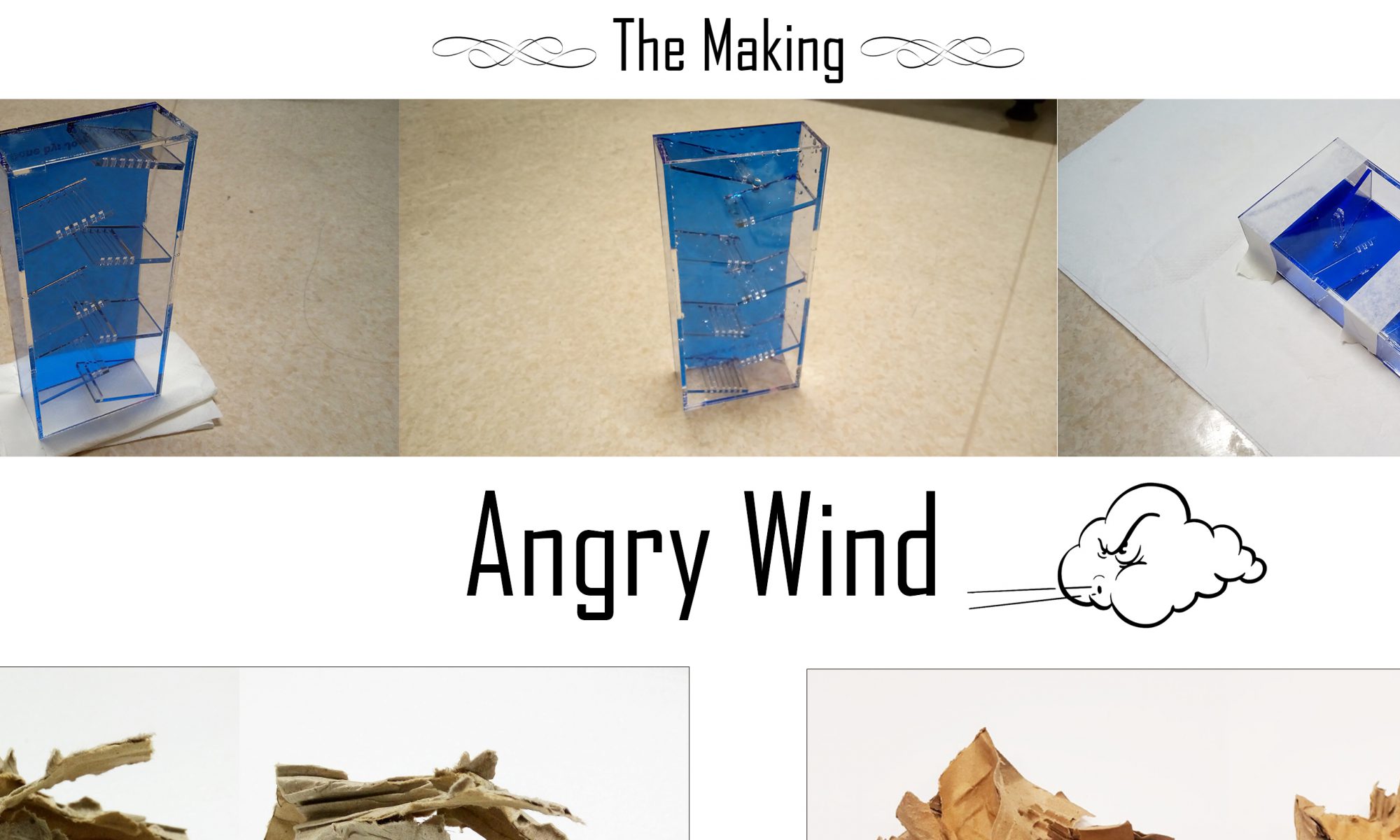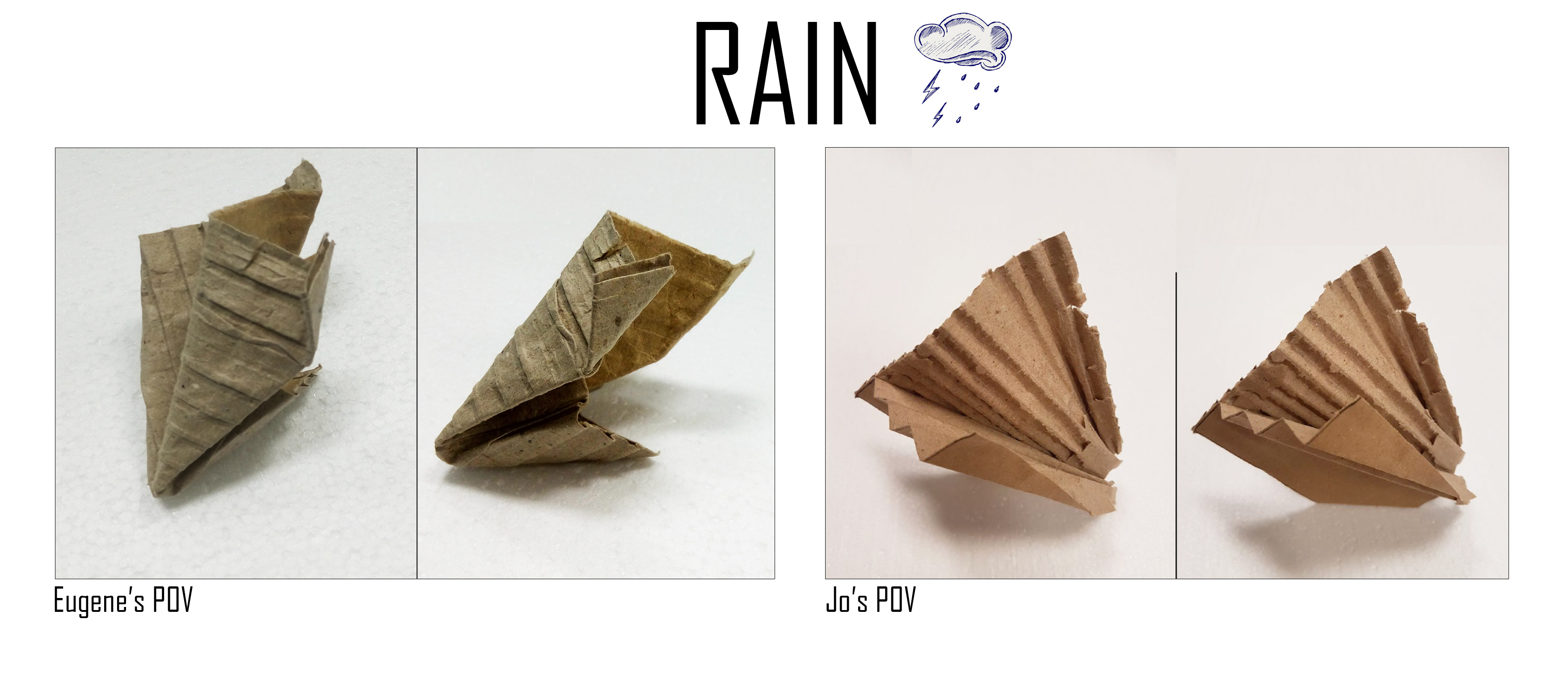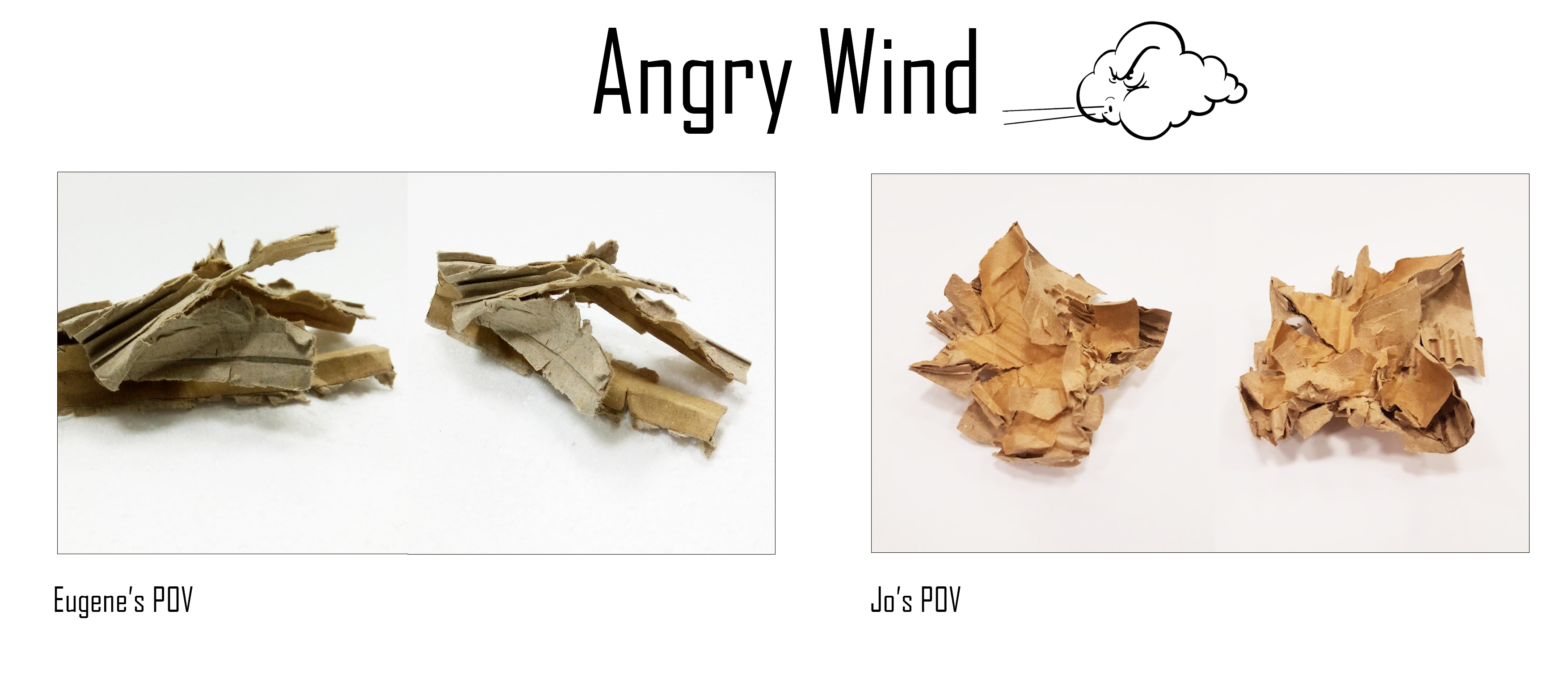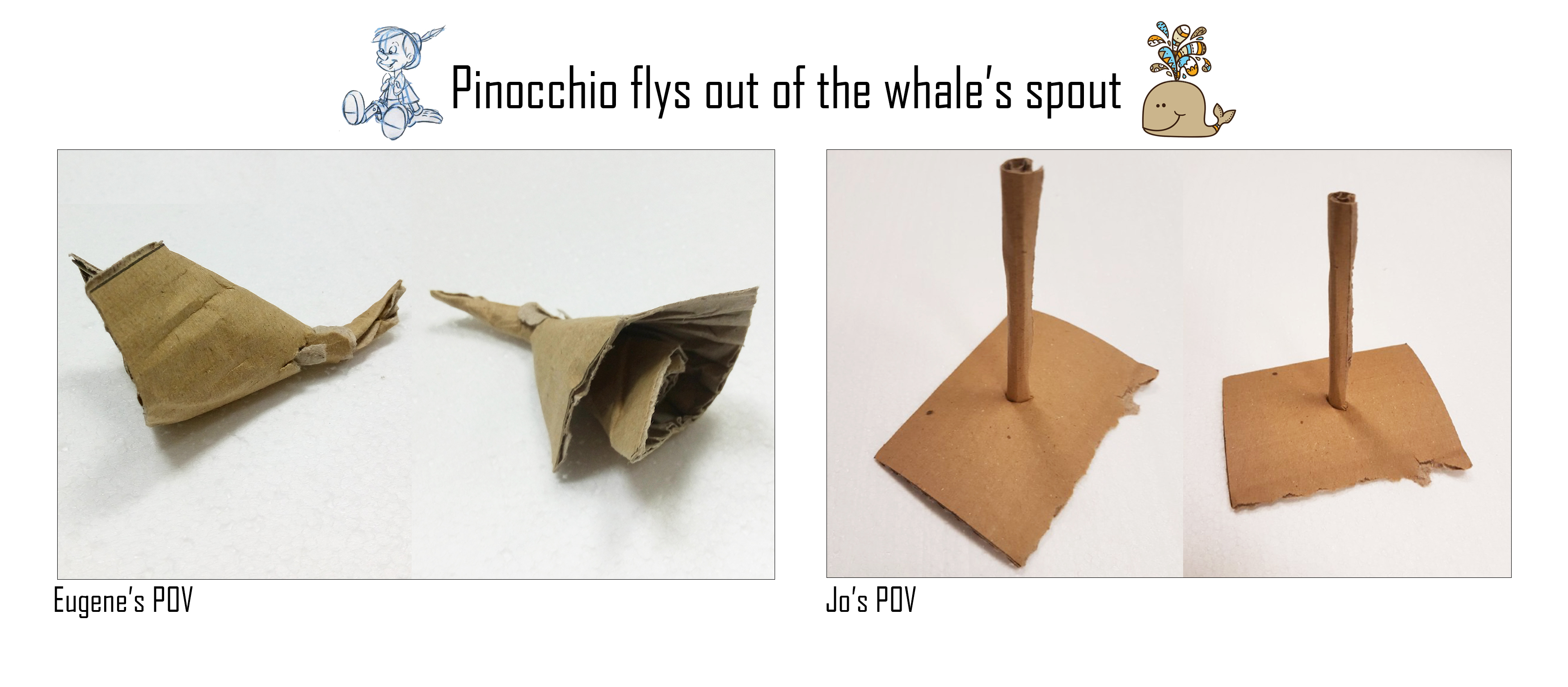DR3005 – Week 7
Expanding on the previous week’s proposition of ideas, we explored the possibility of creating shapes which could cast shadows based on sunlight and artificial lighting.

Shadow casting sketched concept
We wanted to mimic the irregularity and randomness of the nest in nature and as such the arrangement and length of the branches or twigs is at random.

Mockup explorations of nest forms.
 The effects of cast shadows using the above mockups.
The effects of cast shadows using the above mockups.
We were also looking into existing lamp post for a rough idea on the dimensions of the design.

Lamp post outside NIE
Here is another variation of the cast shadows concept, showing a 3d web of interconnected lines around an angular frame.
We wanted to juxtapose the irregularity of the web with the regularity of the cuboid frame to show a greater contrast. Also the thicker lines of the frame further contrast the thinner lines of the web.
We felt that this design would be more feasible as the lines can be woven onto the box frame. Notice that the shadows are different when the source of light is coming from a different direction, this is to take advantage of the movement of the sun throughout the day moving from East to West, causing a constant gradual change in the shadow.
Lighting can also be placed at different positions around the installation to project different shadows at once.


Irregularity of the web with the regularity of the cuboid frame
Next, is a simplified version of the nest pod concept proposed 2 weeks ago. The form is a semicircle seat in which one person can sit.
It is intended to give a feeling of being enveloped or cocooned by a nest, and is also a reference to the shape of an egg which hatches within the nest.
One version can be propped up by wooden rods, or it can be just resting on the ground. The ground version can potentially be a rocking chair as well.

Nesting pod sketched concepts

Simplified version of the nest pod concept
Lastly, we have a curved bench seating installation that is inspired by the shape of the nest.
The design is simplified to geometric circles and arcs, but we attempted to keep and maintain the form and essence of a nest in the sense that it gives a feeling of closeness and security.
Also, the structure is skeletal and unconcealed, echoing a sense of honesty because of its revealing quality. In nature, bird nests are built with carefully chosen branches and twigs, they represent a certain dedication, sincerity and honesty.
The curved shape of the bench also encourages social interaction between the people sitting there. Unlike straight benches, where the people sitting on it face a single direction, the curved shape creates a setting where people sit facing each other and opposite of each other, increasing the likelihood of them having eye contact and wanting to talk to each other.
In a sense, this is a social setting that is created merely by the shape of the arc. Warm cove lighting can be placed at the bottom edge of the pod, shining upwards, to accentuate each ring or arc, and create a further contrast between light and shadow, while giving the feeling of warmth and comfort enveloped within the ‘nest’.


Curved bench seating installation
For further development, we would like to consider the structural design in terms of ergonomics and weaving pattern for the possible resemblance of the bird nest (texture).

Weaving design
Location
During the weekends, we headed down to school in search for the location for the placement of our installation. Below are some places that we think possible.



Outside Centre of Research and Development Office

 NTU, North Spine
NTU, North Spine

NTU, Wave Lobby Area
